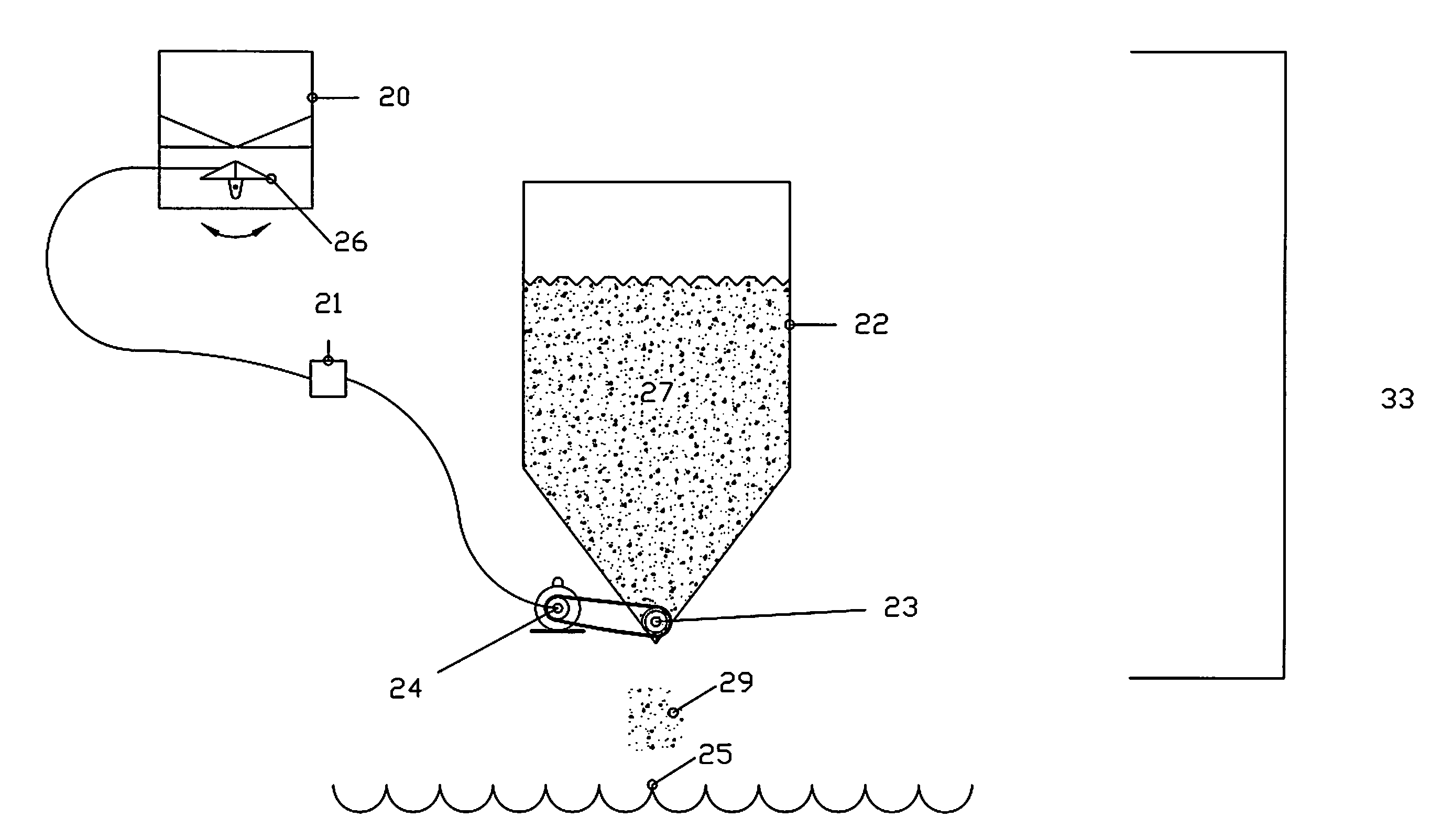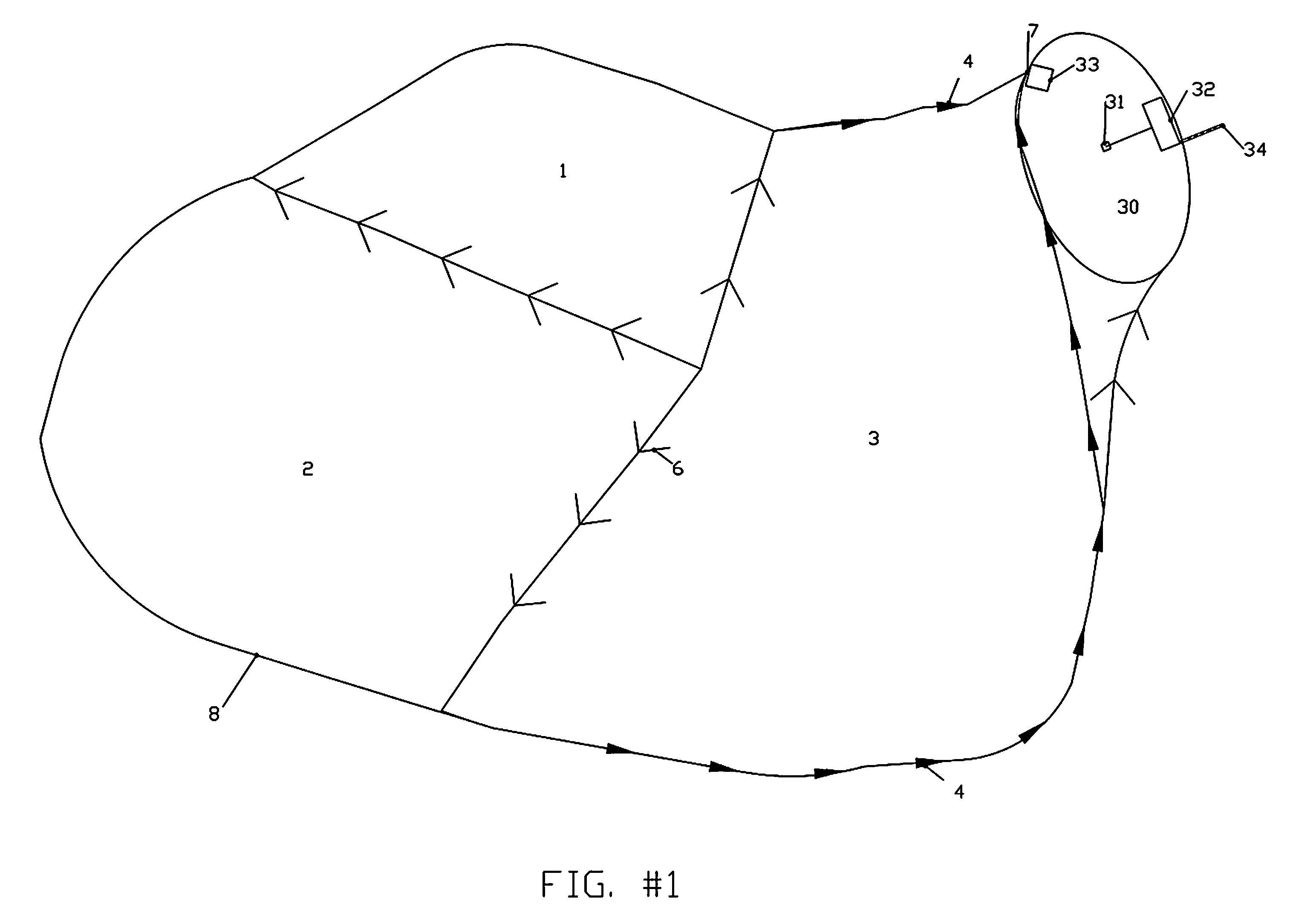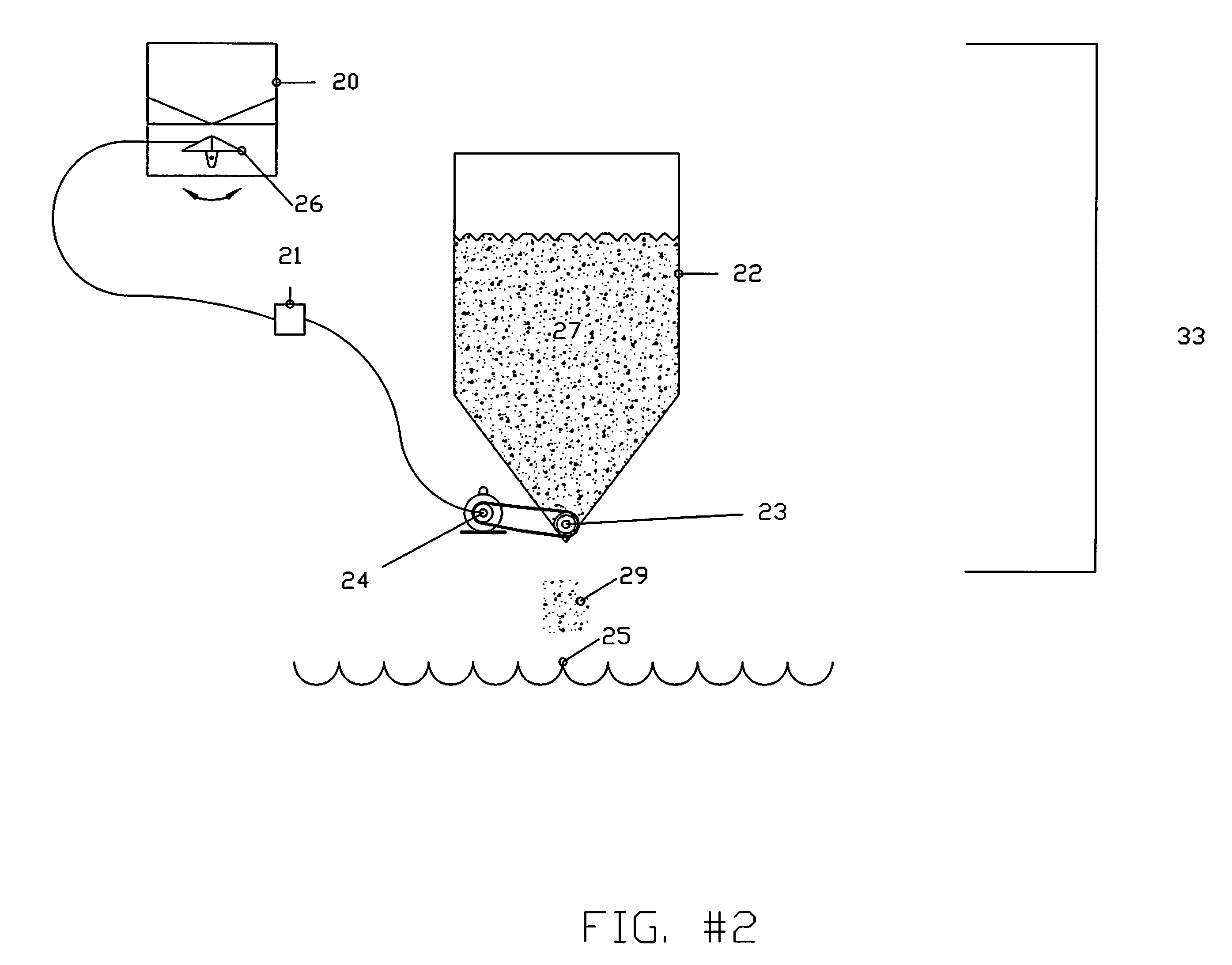Method for treating runoff water using a series of treatment sequences to remove fine pollutants and clay
a runoff water and treatment sequence technology, applied in the direction of sewage draining, filtration separation, separation process, etc., can solve the problems of reducing the effect of filtration efficiency, affecting the quality of runoff water, so as to minimize the risk of overdosing
- Summary
- Abstract
- Description
- Claims
- Application Information
AI Technical Summary
Benefits of technology
Problems solved by technology
Method used
Image
Examples
Embodiment Construction
[0018]An exemplary embodiment of the present invention is illustrated as implemented on a construction job site, which can typically introduce a large quantity of fine particulate sediment into the rainwater runoff water. Although the present invention is illustrated in connection with a construction site, the invention is applicable in any situation where fine particulate material is introduced into a water flow and requires removal, whether or not the introduction of the material is the result of soil erosion.
[0019]Prior to start of construction the job site FIG. 1 topography is analyzed to determine the water runoff flow for the limits of the construction site 8. The analysis will determine how rain water and / or ground water drains from the site. Typically a site is divided into drainage areas, such as drainage areas 1, 2 and 3 illustrated in FIG. 1, which are separated by drainage divides 6. An analysis is also made to determine the surface area in a particular drainage area to ...
PUM
| Property | Measurement | Unit |
|---|---|---|
| Temperature | aaaaa | aaaaa |
| Time | aaaaa | aaaaa |
| Flow rate | aaaaa | aaaaa |
Abstract
Description
Claims
Application Information
 Login to View More
Login to View More - R&D
- Intellectual Property
- Life Sciences
- Materials
- Tech Scout
- Unparalleled Data Quality
- Higher Quality Content
- 60% Fewer Hallucinations
Browse by: Latest US Patents, China's latest patents, Technical Efficacy Thesaurus, Application Domain, Technology Topic, Popular Technical Reports.
© 2025 PatSnap. All rights reserved.Legal|Privacy policy|Modern Slavery Act Transparency Statement|Sitemap|About US| Contact US: help@patsnap.com



